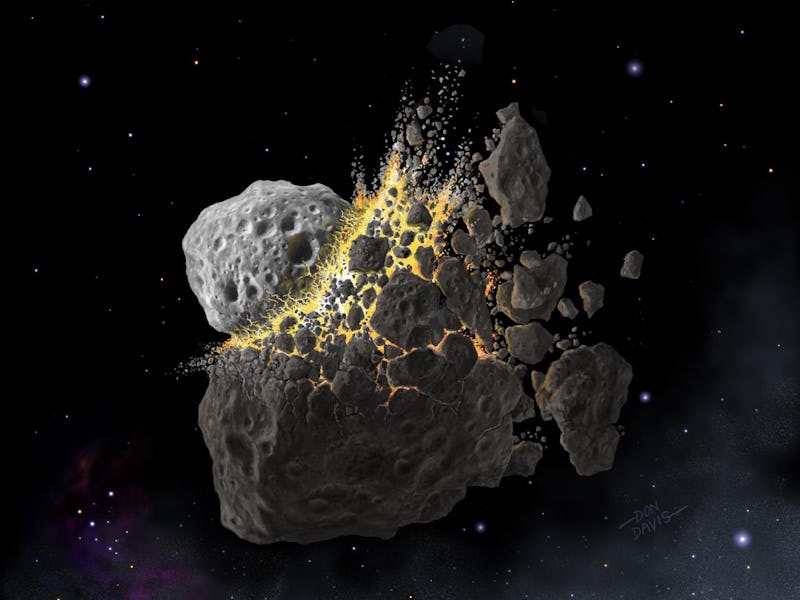A 466 Million Year Old Collision is Pelting Earth with Space Confetti

About 466 million years ago, before dinosaurs ruled the Earth, a giant collision broke an asteroid into pieces. These pieces were hurled to Earth as meteorites and transformed the meteorite landscape to what it is today.
In a study published Monday in Nature Astronomy, researchers found that many types of meteorites that are currently hit Earth only on rare occasions used to slam into the planet much more frequently.
“Studying the composition of the meteorite flux to Earth, we can learn what collisions happened, how big they were and maybe some day we’ll know why they happened,” lead author Philipp Heck of the Field Museum in Chicago tells Inverse. “It also helps us to discover previously unsampled solar system objects.”
The giant collision at the center of this study happened during the Middle Ordovician period, which ranges from 458 to 470 million years ago. (Dinosaurs started appearing on Earth 230 million years ago, and one theory says their extinction was caused by an asteroid hitting Earth.)
By studying meteorites, scientists can better understand how the solar system developed. Since the meteorites and micrometeorites from over 466 million years ago are different from the ones that have fallen since then, most meteorites we see today are fragments of this collision. Later on, many meteorites came from secondary parent bodies, but many of these bodies came from that collision.
“Asteroids are remnants from the original building blocks of planets,” Bill Bottke of the Southwest Research Institute in Boulder, Colorado and one of the paper’s contributors tells Inverse. “If you can study a meteorite, you’re actually looking at a window of what they were like.”
The research team analyzed micrometeorites from about 467 million years ago that they found in a river valley in northwestern Russia. They then dissolved the rocks in acid so that only chromite crystals remained. These crystals remain unchanged, even after hundreds of millions of years. Using these crystals, scientists can find out what the original meteorite was made of.
They also found micrometeorites from Vesta, an asteroid that experienced a collision over a billion years ago, causing a 500-km crater to form and filling the inner main asteroid belt with fragments. Fragments from Vesta hitting Earth were much more common over 466 million years ago.
Back then, up to 34 percent of meteorites before the collision are primitive achondrites, a type of meteorite. In contrast, only 0.45 percent of meteorites today are this kind.
Going forward, the team plans to study meteorites for other periods in the Earth’s geological past.
“We can start to make a sort of timeline when big things were hitting the Earth,” Bottke says. “The question is, how does that relate to the history of life? Have asteroids affected our biosphere or life in some fashion? All this can be learned in the study of meteorites and also asteroids.”